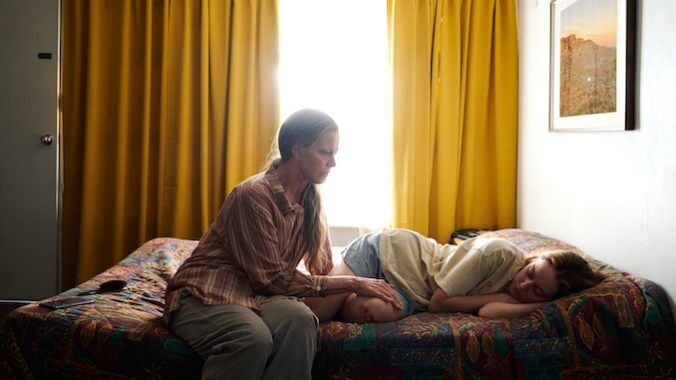The Lost Flowers of Alice Hart Adaptation Embraces Change in its Exploration of Nature and Grief
Photo Courtesy of Prime Video

Holly Ringland’s debut fiction novel The Lost Flowers of Alice Hart focuses on one young woman’s journey through a traumatic adolescence and an even rockier adulthood. The book was released in 2018 to solid reviews, favoring Ringland’s flowery language and sprawling descriptions. The main criticism though, was the characterization of Alice and the omission of depth of the novel’s supporting characters. Prime Video’s adaptation gives both aspects a needed reworking, allowing a tightened and more effective story to blossom.
Alice (Alyla Browne and later Alycia Debnam-Carey), a child who is kept within the small world of her family home, dreams of a life where she can be free in nature. Sheltered by her abusive father and browbeaten mother, the young girl’s life is unable to blossom, with no education and no friendships to be found in her near future. Sick of being trapped in the house, she leaves home when her mother and father are away and makes the trek to the town library, finding comfort in stories of make-belief and fantasy.
There, a librarian named Sally (Asher Keddie) notices Alice’s disheveled state and calls her husband, a police officer. This shifts the events of Alice’s life forever, setting off a chain of events that unravel the rest of the story. After Alice (seemingly) sets a fire that kills her mother and father, she is left comatose and then transferred into the care of her estranged grandmother June (Sigourney Weaver). June works on a flower farm, housing abuse survivors and cultivating a safe haven for them. There, Alice’s life finally has a chance to bloom.
The show could have suffered from being a run-of-the-mill adaptation, unfolding the story identically to how the original novel evolves, but showrunner Sarah Lambert seems to know that would simply not be enough. With a visual adaptation, the story is allowed to widen its scope, with June’s flower farm and the Australian landscape symbolizing the world that Alice yearns for. Shots of the vast open fields hone in on the idea that Alice is trapped as a child with her father, but later as well with her controlling grandmother. The only place she will truly feel safe is alone in nature.
Each episode of The Lost Flowers of Alice Hart unwinds itself with the presence of nature and lost memories. From the beginning, Sally’s persistence when it comes to taking care of Alice stems from her desire to be a mother again after her child’s death. She uses Alice as a crutch to chase that dream, just as June later uses Alice to attempt to live a life through her. Each woman in the show is haunted by a memory, or person, that warps their idea of what is just and right, fracturing their relationships along the way.
-

-

-

-

-

-

-

-

-

-

-

-

-

-

-

-

-

-

-

-

-

-

-

-

-

-

-

-

-

-

-

-

-

-

-

-

-

-

-

-








































